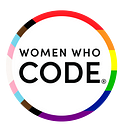Tech as a Force for Good
Pat Gelsinger, CEO VMWarePat started off by talking about what he called the “Technological Superpowers.” These are the massive tech companies that are changing the way we live in fundamental ways.”Technological superpowers that we see today that are truly reaching and touching and changing the world like never before.”He went on to note the power of Silicon Valley, and the people living there, as they, more than anyone else on earth, have the power to shape the Technological Superpowers for good.The bulk of Pat’s talk centered on for major areas of technology — Mobile, cloud, AI and Edge/IoT — and the ways that they can be used as forces for good.Mobile: Over half of humanity has a constant connection to the internet. That means that you can write an app, bring it online, reach half the consumers in the world. But according to Pat, “We’re not just connecting the planet, we’re also able to use that connection as a force for good.” He went on to describe a program where something as simple as giving farmers in Kenya cell phones was able to elevate 2% of the population out of poverty.Cloud: Today we live in a world where half of all computing power is on the cloud, and unprecedented scale is possible. The worlds most powerful super computer can be rented for as little as $10,000. That means that it is possible to approach problems from a big data perspective that allows you to understand and tackle challenges in a much more comprehensive and effective way.AI: According to Pat, “30 years ago we didn’t have the tech to implement AI. Today intelligence can be brought to everything we do.” He went on to talk about the power of this, specifically in the medical industry, and told a story about a mountain climber, Hugh Herr, who got hypothermia and lost both of his lower limbs. However, today he is still able to climb, and even has the ability to extend his new bionic limbs to gain several inches in height and reach.He also noted that the regulation of AI is the “stupidest thing I’ve ever heard” and went on to list three reasons why.1. You can’t regulate AI. It’s algorithms, it’s ideas, it’s free software. How do you regulate that?2. We shouldn’t. It’s still at its very nascent phase and there is so much more that we can do.3. It will be regulated, in applications and industries as it is applied. Like smart cars.IoT — Bridging From the Digital to the Real World. Today there are 8–8.5 billion humans connected to smart phones. The ability to change lives by simply giving them access to information is profound and transformative.He finished up by talking about the nature of technology and the good that it is and has done. In the last 50 years, the average life span has increasd by 20 years, and that is despite the fact that the medical field is one of the least penetrated by technology. Technology is innovating faster now than it ever has efore in your life, and it will never innovate this slow again. But he reiterated the responsibility of those in tech, and those who live in Silicon Valley at the center of the tech world. “Tech is fundamentally neutral. It’s our responsibility as leaders to shape it for good … we the tech industry have an obligation to train and shape policies and regulations, and bring about tech as a force for good.”
Pokemon Go & Augmented Reality — Now is the Time for AR
04.28.2018 Presenter: Dana Hu — AR Engineering at Niantic LabsIn this… READ MORE
Changing the Face of Tech: WWCode Directors from Around the World
04.28.2018 Moderator Joey Rosenberg, Global Director of WWCodeWith: Michie Ang, WWCode… READ MORE
04.28.2018 Pat Gelsinger, CEO VMWarePat started off by talking about what… READ MORE
Originally published at www.womenwhocode.com.
